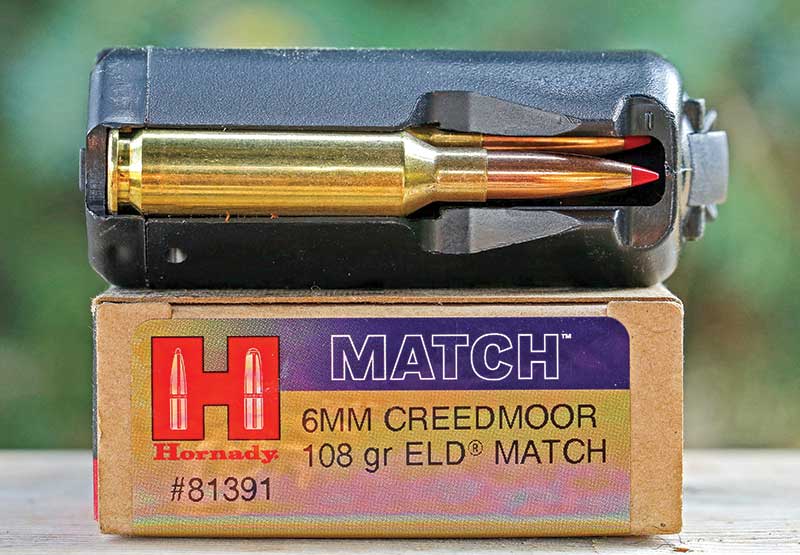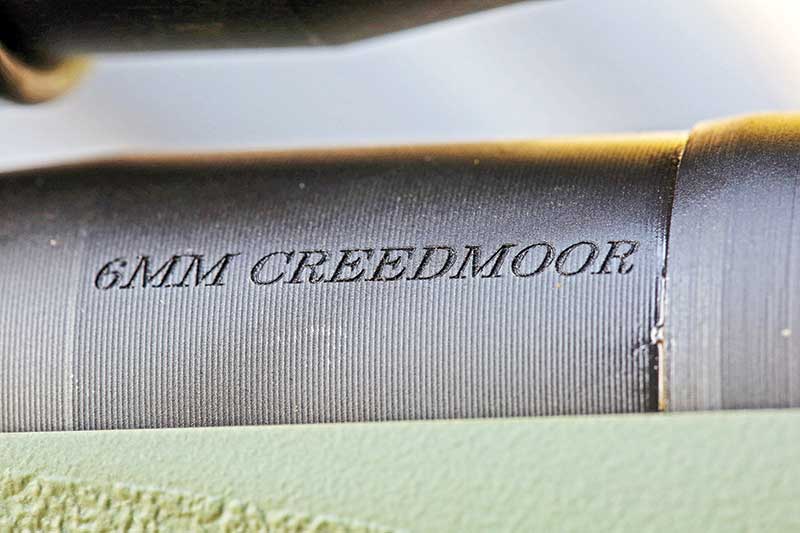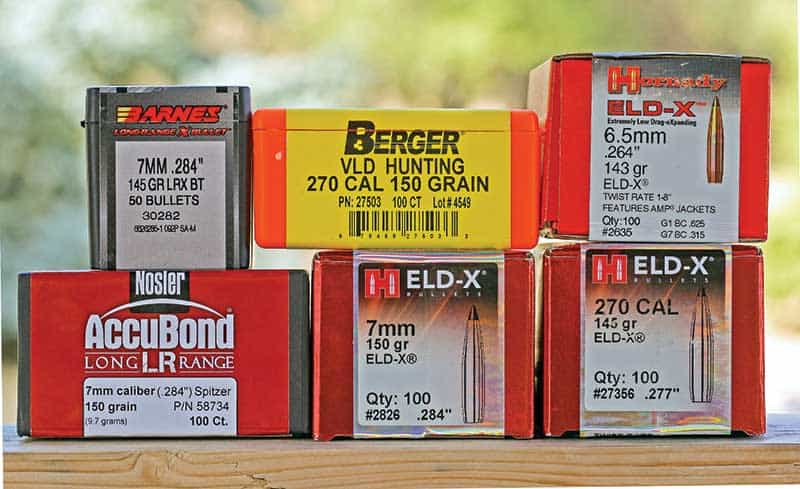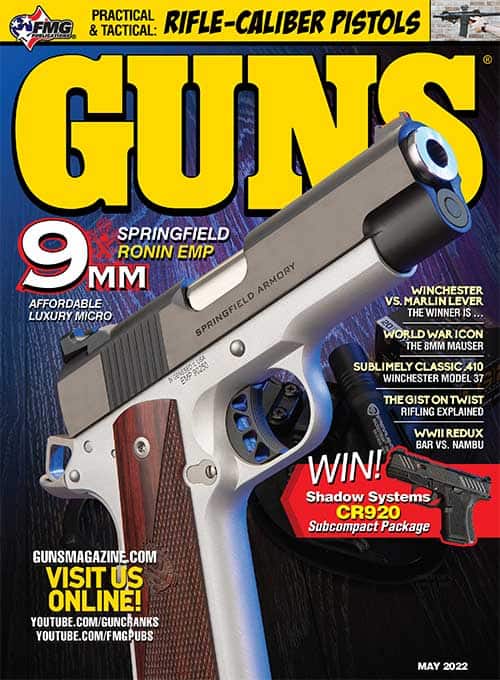The gist on twist
Rifling is the key to precision
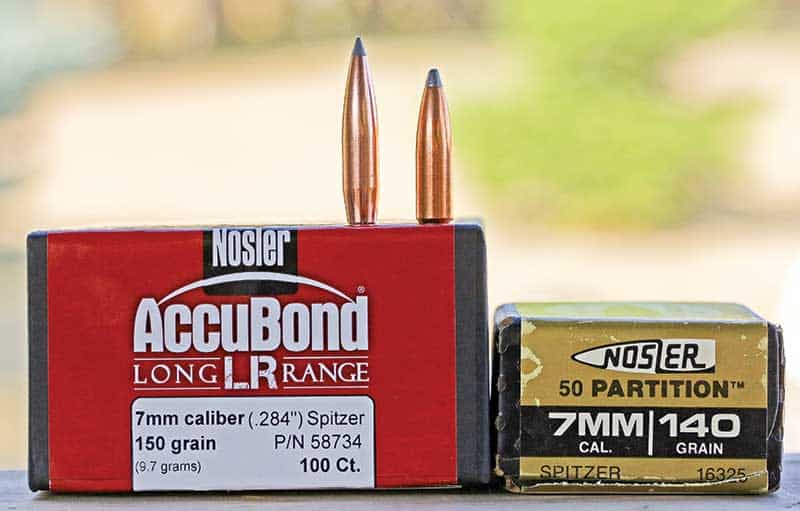
The proven 140-grain Nosler Partition bullet (right) has a respectable G1 ballistic coefficient
of 0.434 but the newer 150-grain Nosler Accubond (left) has a startling G1 B.C. of 0.611. Even
if the 140 has a 100 fps advantage at the muzzle, by the 400-yard mark the 150 is going 200
fps faster and wind drift is only 2/3 as much.
Smoothbore muskets firing lead balls were not very accurate. To be more precise, they were accurate enough at very close range but as the range increased, the bullets veer off unpredictably. Long ago some forgotten genius found that if a sphere is spinning, it retains accuracy at longer ranges.
Baseball pitchers grip and release the ball to make it spin so they can throw more accurately. Actually a few pitchers developed a technique to not spin the ball. Throwing a ball to minimize spin — the “knuckleball” — is by no means easy. The few pitchers who could do it well such as Phil Neikro, R.D. Dickey and Tim Wakefield were virtually unhittable when they were really on their game.
No Hitter
When the knuckleball is really working it moves in ways the pitcher can’t predict, much less the batter. Sometimes though the knuckleball just won’t break, which is why knuckleball pitchers go from unhittable to getting blown out. When the ball doesn’t break, you’re left trying to sneak a 75 mph straight pitch past a major league batter — good luck!
As shooters we don’t want bullets veering off unpredictably. We want the bullet to remain stable. Just as with a baseball, the way to keep it stable is to spin it. We generally measure rate of spin in terms of how many inches the bullet travels to make one revolution. If the barrel was made outside of North America, it most likely was made using metric measurements. A nominal 1:10 twist is most likely one turn in 25cm, equivalent to 1:9.84375. I remember being puzzled why some European-made rifles would have twist rates of 1:7.87 or 1:8.66. Why not use whole numbers? They did, except they used centimeters.
A spherical bullet is fairly easy to stabilize. Early black powder rifles often had a twist of 1:66, while current muzzle loaders seem to have settled on 1:48. As bullets got longer, spin rates had to be much higher in order to stabilize the bullet. A .30-caliber bullet at 2,500 fps from a barrel with a 1:12 twist exits the muzzle spinning at 2,500 revolutions per second or 150,000 RPM.
Circa 1900 when smokeless powder cartridges were being adopted, a trend in Europe was toward long, heavy for caliber bullets — 156 to 160 grains for 6.5mm cartridges, 173 to 175 grains in 7mm. These long bullets needed twists of around 1:7.5 to 1:8.7 in order to stabilize. U.S. military ordnance used a fairly fast 1:10 twist for its .30-40 Krag and .30-’03 cartridges firing 220-grain round-nose bullets. The 1:10 twist proved adequate for the .30-’06 cartridge with sharp-pointed 150- and 172-grain bullets and remains the standard ’06 twist to this day.
In those early days, bullets were not as consistent as those of today. Jacket thickness and metallurgy wasn’t held to as close tolerances, nor were bullet weight and concentricity. American shooters tend to be more accuracy-obsessed than most. They found a fast-twist barrel increased the adverse effect of bullet flaws. Rifles for newly introduced American sporting cartridges were given barrel twists just fast enough for the most-used bullet weights. Usually this worked out. The .300 Savage (1921) had a 1:12 twist, the .22 Hornet a 1:16 twist, both adequate for any bullet weight likely to be used. In a few cases, a slow twist limited versatility and adversely affected sales. Famous examples were the 1:14 twist of the .250-3000 Savage and the 1:12 twist of the .244 Rem.
Twist Today Away
In recent years there has been considerable interest in faster twists. One factor has been the growing interest in longer-range shooting and with it the development of long, highly efficient bullets. Another has been the continual improvement in bullet quality and consistency. Hunters have found heavier bullets in smaller calibers allow the use of light rifles with light recoil for game shooting. Centerfire .22 cartridges in particular have seen much innovation.
How does this affect you and me? If you have a .222, .223, .22-250 or .220 Swift with a 1:12 or 1:14 twist you’ve used for varmint shooting for years, carry on! I have several such rifles and feel no need to sell or rebarrel them.
If you have any notion of using long, sleek .224 bullets such as 75-grain match and hunting bullets, you’ll need at least a 1:9 twist, preferably faster. A 1:8 twist is becoming quite popular for .223 cartridges — Browning, Ruger, Savage, Tikka, Winchester and others offer .223 rifles with 1:8 twist. The new CZ 600 uses a 1:7 twist in .223 and 6.5mm cartridges. With the quality of modern bullets, faster twists give up little, if any, accuracy and add to the rifle’s potential utility.
